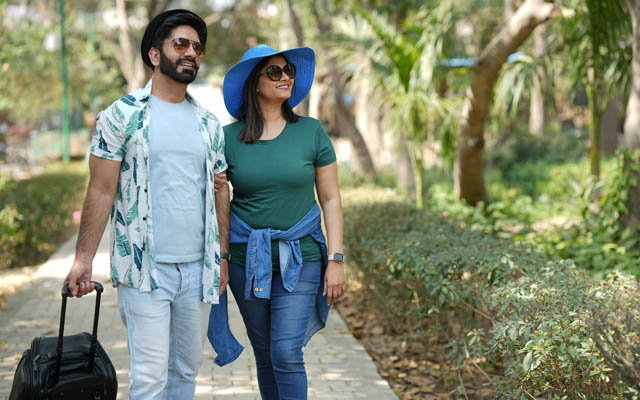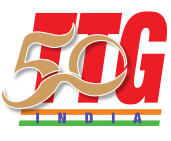Thomas Cook (India) and its group company SOTC Travel have released the India Holiday Report 2025, a study capturing changing travel aspirations and behaviours of Indian consumers. The survey, conducted over a month across digital platforms, received over 2,500 responses from both past customers and non-customers.
Findings indicate a strong surge in travel frequency and spending. Around 85% of respondents plan to take more holidays, with many intending to increase their travel budgets by up to 50%. The trend reflects rising disposable incomes and the aspirational value of travel. There is growing demand for experience-led holidays, including polar cruises, music concerts, global sporting events, wildlife safaris, stargazing, and phenomenon-based travel such as the Northern Lights and cherry blossom seasons.

Respondents also showed increasing interest in spiritual trips, remote locations, and unique accommodation such as igloos, treehouses and chalets. Phygital travel – blending online research with in-person support – continues to drive bookings, while longer holidays are becoming more popular both domestically and internationally.
Key holiday drivers
Travel decisions are being shaped by a combination of social and practical factors. About 60% of respondents said that social media, streaming platforms and films influence their travel choices. Visa accessibility plays a key role, with 44% preferring destinations offering e-visas or visa-on-arrival facilities, such as Thailand, Malaysia, the UAE and Sri Lanka. Countries offering long-term visas, such as Australia, Japan and the US, are also seeing rising demand.
Improved flight connectivity is another driver, cited by 43%. Travel is no longer centred on metro cities, as Tier 1 and Tier 2 markets are contributing to increased outbound movement. Value remains important – 39% of respondents actively seek promotions, though there is a clear shift towards trusted travel brands. Word-of-mouth recommendations continue to be relevant for 30% of travellers.
Increased frequency of holidays and longer stay
A significant number of travellers are planning longer stays. About 54% said they now prefer to extend holidays by five to 10 days, resulting in average trip lengths of eight to 15 days. In parallel, 47% are using long weekends and public holidays to plan shorter getaways.
Travel spending is expected to rise, with 84% intending to increase their budgets by 20% to 50%. Of those, 18% will raise spending by over 50%. Budgets are being redirected towards food, unique experiences and shopping, including visits to premium outlets.
Evolving travel companion preferences
Travel preferences continue to evolve across demographics. Group travel remains the norm, with 90% opting to travel with others. Multigenerational families (65%) are most common, followed by couples (60%) and a growing segment of ‘frolleagues’ – colleagues who are also friends – at 28%. Solo travel accounts for 10%, with solo female and older travellers forming a visible segment.
Experiential holidays are a strong focus, with 75% showing interest. Phenomenon-based travel, such as the Northern Lights, midnight sun and cherry blossoms, is a major driver for 45%. Wildlife safaris, self-drive holidays and outdoor adventures account for 32%. Gastronomic travel (26%) is also on the rise, with preferences for France, Spain, Australia, Thailand, Malaysia, Japan and South Korea. Event-led travel, including concerts and global sporting events, appeals to 22%. Wellness tourism – spa and relaxation-based trips – has also seen demand, with 19% citing interest, particularly in Thailand, Bali and Kerala.
Premium and luxury holidays on the rise
Premium and luxury travel is expanding. Around 36% of respondents are choosing upscale options such as luxury cruises (Scandinavia, Mediterranean, the US), boutique and heritage stays, glacier landings in New Zealand, and travel by super cars or bikes. Private island dining experiences are also gaining traction.
In terms of destination preferences, Europe remains the most sought-after region (50%), led by Switzerland, France, Austria and Germany. Eastern Europe – particularly the Czech Republic, Hungary and Croatia – is emerging. South-east Asia follows closely (46%), especially Thailand, Malaysia, Indonesia and Singapore. The Middle East, including Dubai, Abu Dhabi, Oman and Ras Al Khaimah, attracted 37%. Japan and South Korea are preferred by 35%, while Australia and New Zealand draw 26%. Island locations such as Mauritius, Maldives, Bali and Sri Lanka attract 22%, and South Africa and Kenya draw 12%.
Shorthaul interest in Central Asia is rising, with Uzbekistan, Kyrgyzstan and Kazakhstan cited by 32%. Destinations like Morocco, Iceland and Greenland are beginning to appear on travellers’ radar (8%).
Domestically, Kashmir, Himachal Pradesh and Uttarakhand are top choices (55%), followed by the North East (25%), Bhutan (32%), Rajasthan and Kerala (21%). Beach destinations like the Andaman Islands and Lakshadweep (3%) are gaining momentum, while Goa accounts for 13%.
Increasing demand for new travel formats
There is growing interest in alternative travel formats. Cruises (45%), self-drive holidays (35%) and scenic train journeys (20%) are being chosen alongside conventional air travel. These formats reflect a move toward slow and immersive experiences, including sustainable options such as train travel in Switzerland.
Booking patterns show a continued reliance on human support, even as digital adoption grows. While 68% book online, 59% still use phone consultations or visit agencies in person. Phygital bookings, used by 58%, allow travellers to research online and receive personalised advice offline.
Travel styles are fairly evenly distributed. About 35% of respondents prefer partially guided tours, 33% choose fully guided packages, and 32% plan holidays independently.
Sustainability is increasingly important, with 37% prioritising eco-conscious travel practices. Technology is also playing a greater role, with 35% using digital platforms to research, book and plan itineraries.
The India Holiday Report 2025 reflects Indian travellers’ shifting expectations—more holidays, longer stays, and a clear emphasis on meaningful and tailored experiences.
Rajeev Kale, president & country head – holidays, MICE, Visa, Thomas Cook (India), said: “The Indian traveller story is no longer just about destinations – it’s a reflection of evolving lifestyles and rising aspirations.”
“Our Holiday Report 2025 reflects evolving travel formats, with Indians moving away from rushed itineraries in favour of comfort-first, immersive experiences. At SOTC, we’re proud to offer experiences to suit every Indian traveller segment, (ensuring) every journey is memorable and enriching,” added SD Nandakumar, president & country head – holidays & corporate tours – SOTC Travel.











